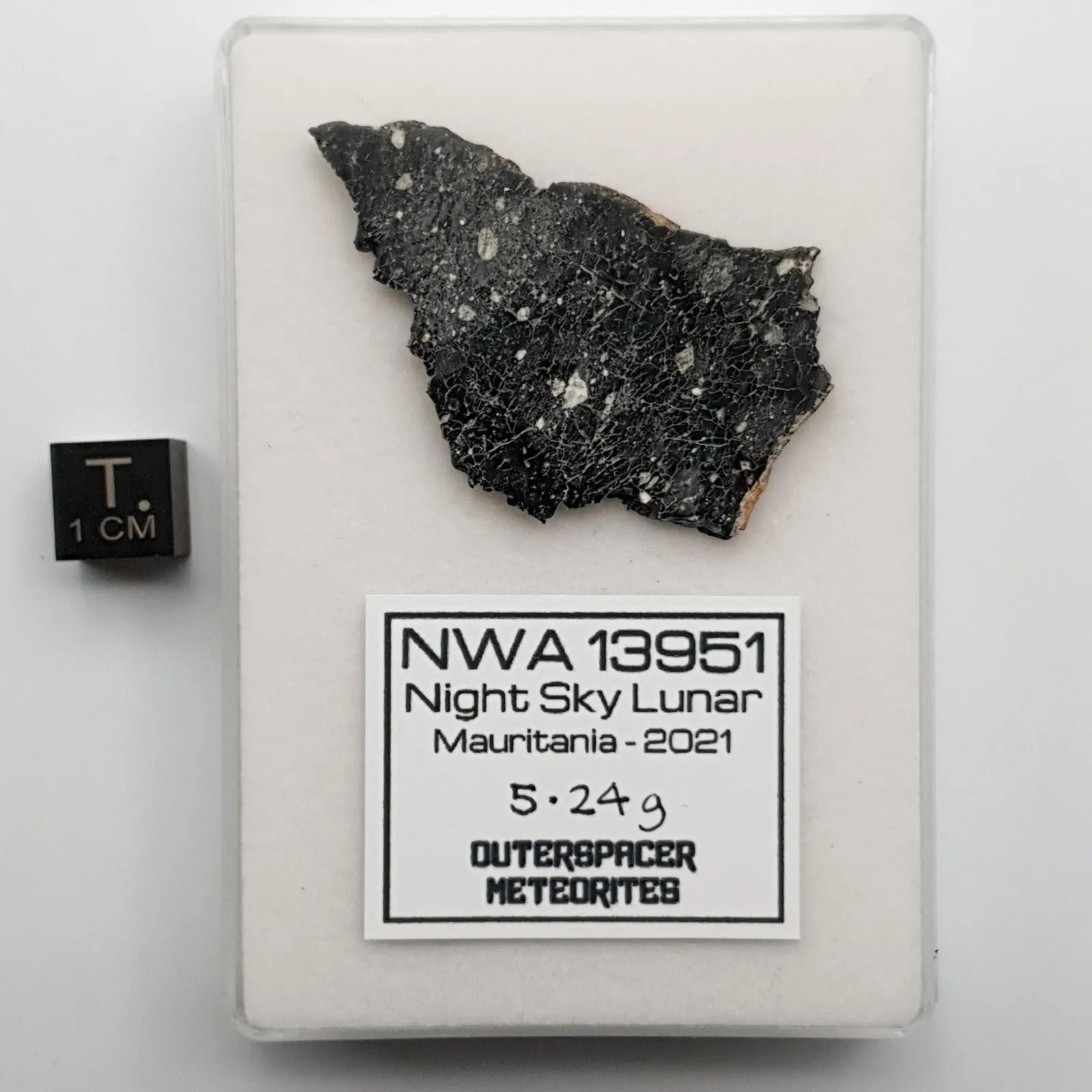FALL/FIND LOCATION: Mauritania, North West Africa
WEIGHT: 5.24g slice
Observations:
The authenticity of this specimen is guaranteed and certified by me, the Geologist J.A.Poblador, member of the Global Meteorite Association G0043 and International Meteorite Collectors Association IMCA 5681. Also listed as one of the official main mass holders of this material.
The Night Sky Lunar meteorite is unique and distinctive among Lunar meteorites. The soft edges of the large clasts are perfectly juxtaposed against the dark blue-grey matrix, which is scattered with flecks of iron. Looking deeply into this slice is like staring into the Milky Way on a dark night. The present stunning 63.14-grams slice was cut from its sister meteorite.
The total known weight (TKW) of the Night Sky Lunar meteorite is only 4.35kg. It was discovered in two pieces in the Mauritanian Sahara Desert by nomads in 2020. Only the smaller 1800-gram piece has been sliced, whilst the larger 2550-gram piece has been kept fully intact as a museum specimen. The meteorite would have started its journey to Earth as a result of a massive meteor strike on the moon's surface, likely creating one of the craters we see on the Moon today. That initial strike had sufficient force to eject this and other rocks from the surface of the moon at escape velocity, leaving them to float freely in space. Eventually, this mass intersected with the Earth's own orbit where its surface was flash-heated to 2,800 degrees Fahrenheit on entry, then rapidly cooled in the frigid temperatures of Earth's upper atmosphere, before slowing to approximately 200 miles per hour on its final descent. This fall would have lit the Saharan sky up before hurtling down to its site of discovery.
The present slice reveals the Night Sky Lunar meteorite's dark brecciated interior, indicating that it is composed mainly of rare Lunar regolith clasts embedded in a partially melted matrix. Flecks of iron are plentiful and exist as remnants from previous iron meteorite impacts on the Moon. The partially melted matrix is due to the high pressure of a meteorite impact on the Lunar surface, which ejected part of the surface regolith. The composition of the stone indicates that it most likely originated in the Lunar Highlands.













